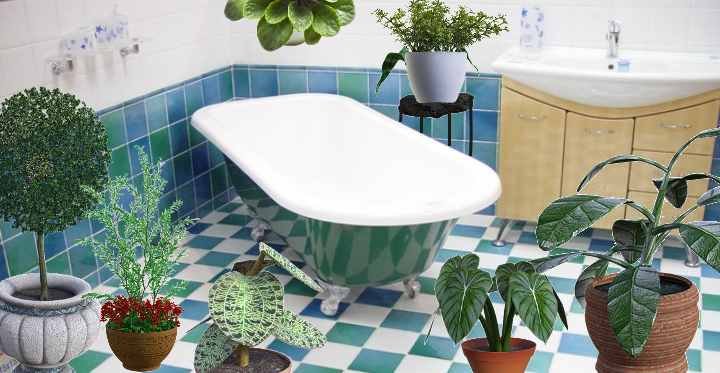The best shower plants for your bathroom are houseplants that thrive in low-light and very humid conditions. Many indoor plants grow well in bathrooms where they can improve aesthetics and create a natural, almost tropical environment. Most bathrooms usually have less light than standard rooms—some bathrooms may even be windowless. Filtered sunlight or artificial light and steam from the shower create a unique growing environment for many “bathroom plants.”
Of course, not all plants survive in a bathroom. Bright light and arid conditions are required by many succulents. Furthermore, several evergreen plants are low-light plants that are prone to fungal infections if their potting soil is too wet. However, being in a small dark area with access to a bath or shower is perfect for certain plants.
In a bathroom, these shower plants are perfect:
- ZZ plants
- Flowering orchids that love humidity
- Air plants that don’t need a lot of light
- Spider plants
- Dumb cane plants
- Peace lilies
- Cast iron plants
- Snake plants
- English ivy
- Arrowhead plants
Types of Shower Plants to Keep in Your Bathroom
Plants can’t survive in complete darkness, of course. Some shower plants may flourish in windowless bathrooms if they get adequate artificial light even if they are in apartments with no windows. Furthermore, several indoor bathroom plants are protected from direct sunlight by filtered light through frosted glass.
What are the best types of shower plants to keep in your bathroom? Pick plants that thrive in high humidity and have minimal lighting requirements for your bathroom. Shower plants also tolerate temperature fluctuations, which means that bathrooms warm up and then cool down quickly during shower time. For shower or bathroom plants, the following three fundamental requirements apply:
- High humidity
- Low light
- Fluctuations in temperature
The Best Plants to Keep in the Bathroom (With Pictures and Common Names)
Let us examine the many plants that grow well in dark closets and aren’t stressed by the steam and humidity from showers in more depth.
ZZ Plant (Zamioculcas zamiifolia)

The ZZ plant can survive hot, steamy, dark bathrooms and is also known as the eternity plant because it’s practically indestructible. The plant can survive for months without water, despite the fact that these “Zanzibar gems” need artificial light or indirect bright light. The plant will probably stay moist and healthy thanks to the humidity from a shower. Try to provide enough artificial light if your bathroom doesn’t have windows.
The stems of Z. robusta are thick and succulent, with lustrous, glossy leaves. These lovely decorative plants can brighten up a dark corner of your bathroom and grow to be about 2 feet (60 cm) tall. Although wet soil can cause root rot, be cautious when keeping in warm rooms with high humidity. Make sure there is sufficient bathroom humidity and that the soil is never too wet or soggy to care for a ZZ plant.
Low Light Orchids (Orchidaceae)

In the image, you can see Phalaenopsis orchid, which thrives in high humidity and little light. Even if your bathroom has only indirect or artificial light, these exotic plants are surprisingly easy to care for. Bathroom décor can benefit from their gorgeous colorful blooms, which brighten up a gloomy room.
You may not have to water an orchid in the moist, steamy environment of a bathroom. The roots of these epiphytic plants absorb moisture and nutrients. This “shower plant” should survive if you have one near your sink or by the bathtub.
Place blooming orchids in front of a mirror on a bathroom shelf to get the best effect. Look for phalaenopsis types when purchasing orchids for a bathroom. Sunless, humid conditions and temperature fluctuations are perfectly suited to these tropical plants. If you have brilliant, filtered shower lighting, try dendrobium orchids or paphiopedilum orchids.
Snake Plants (Sansevieria)

Snake plants, which do not require bright light to survive, thrive in bathrooms. Snake plants may be cultivated in bathrooms using artificial lights, LED, or grow lights. One of the greatest air-purifying plants for your home is these shower plants. Sansevieria plants have upright sword-shaped leaves that are abundant and grow straight up.
These bathroom plants thrive because they don’t like moist soil, so a shower and perhaps watering are usually enough. Any dull room may be brightened up with the long vivid green and yellow variegated leaves.
Air Plants (Tillandsia)
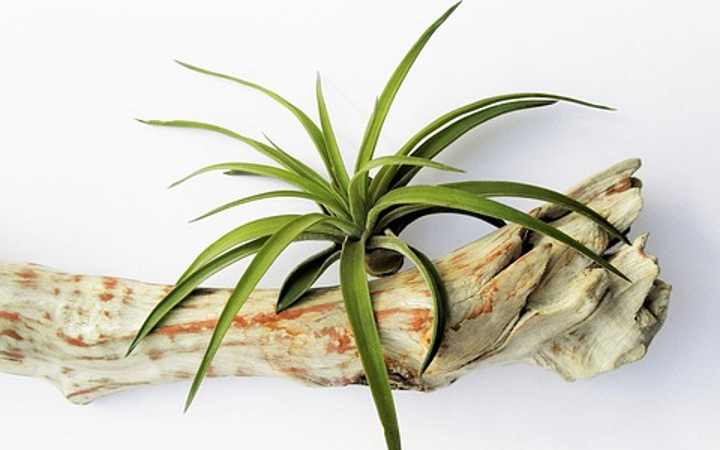
Since they need little light and humidity, air plants are ideal bathroom plants. They take moisture from humid air via their roots, making them a kind of epiphytic plant. As a result, you’re watering these tiny bathroom beauties every time you take a shower. These plants seem to be unaffected by even the faintest of windowless bathroom conditions.
Air plants can be used in a variety of ways to embellish your bathroom. You might, for example, brighten up a gloomy corner with them in a hanging basket over your bath. Alternatively, you might mount the plants on tiled walls by attaching suction cups. Since they don’t need any soil to survive, putting an air plant on a shelf above your bathroom sink is acceptable.
Spider Plants (Chlorophytum comosum)

Spider plants, because they don’t need much care, are some of the best low-light bathroom plants. Dry rooms with direct sunlight are the worst conditions for spider plants. As a result, bathrooms with gloomy, heated situations are perfect. In any windowless space, including low-light bathrooms, their beautiful, arching ribbon-like leaves add a lovely touch.
These plants don’t seem to be fussy about their environment. They’re both air filtering house plants and attractive hanging baskets for bathrooms. The variegated white and light-green spider plant is the most popular kind of bathroom spider plant. The plant thrives due to the shower steam’s high humidity. You can also install them in the shower to create a natural, tropical feel.
Madagascar Dragon Trees (Dracaena)
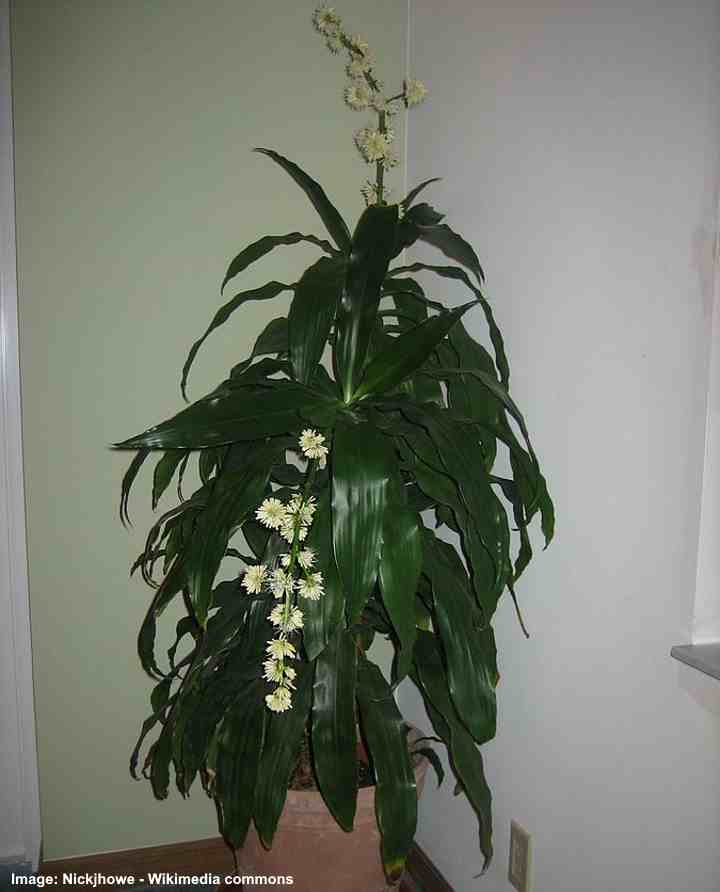
Because of their need for shade and humidity, dracaena deremensis ‘Janet Craig’ is a popular bathroom plant. The Janet Craig cultivar is the finest kind of dragon tree for small spaces with limited light. This small tree’s dense leaves perform better in low-light situations than the lighter-colored types.
A few feet is possible for dragon trees to grow. As a result, they might not be the best indoor shower plant for tiny bathrooms. The spiky foliage may give a corner a boost if you have room to spare. You may still control the growth of these humidity-loving low-light plants in small bathrooms, even with regular pruning.
Low-Light Bathroom Ferns
Growing ferns indoors under dark, humid circumstances may be challenging for some types. Several ferns, on the other hand, prefer humidity in the form of showers and flourish in shaded light. Filtered sunlight that isn’t affected by fern growth can be created by frosted glass on many bathroom windows. Two ferns that thrive in high humidity are shown below:
Rabbit’s Foot (Davallia fejeensis)
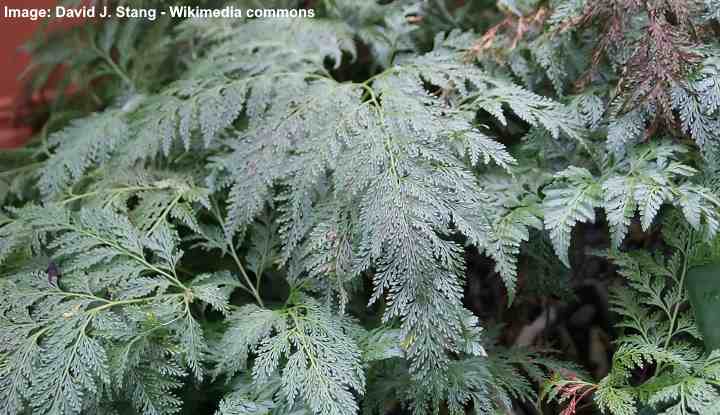
Rabbit’s foot ferns grow well in moist air, so you can leave them hanging in your shower area. They will do fine in the shade, despite their bright, indirect light requirements. Your bathroom will be adorned with the bushy look and cascading branches in time.
Blue Star Fern (Phlebodium aureum)

Green-blue leaves grow in indirect light on these easy-going bathroom plants. They will adapt well to bathrooms with little natural light, even if they prefer brilliant light. Blue star ferns thrive in humid places like bathrooms.
Dumb Cane for High Humidity Rooms (Dieffenbachia)
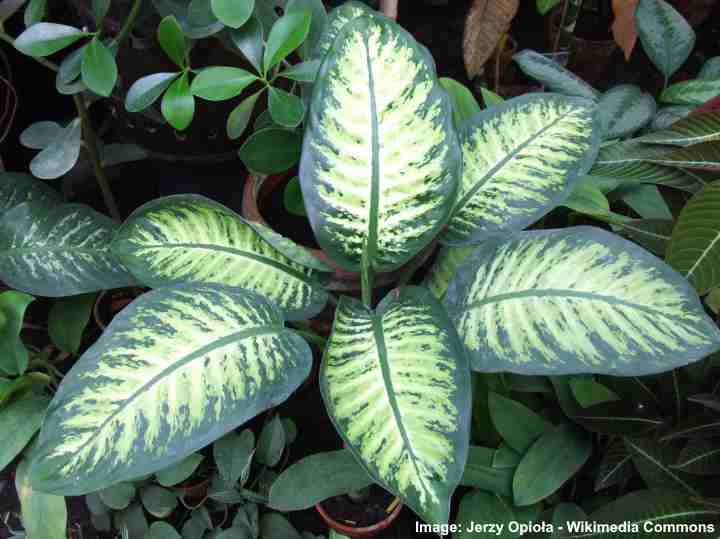
Since they like humidity and tolerate periods of darkness, deffenbachia cv. ‘Bausei’ is one of the best plants for bathrooms. The large variegated leaves of these moisture-loving houseplants create a bushy appearance. Sun scorch affects the delicate leaves, so they should receive indirect or low light.
The leaves of dumb canes may be up to 12 inches (30 cm) long and grow up to 3 feet (0.9 cm) tall. These may be the perfect bathroom plant if you have a huge bathroom with plenty of artificial light. A foolish cane, on the other hand, may still create a tropical atmosphere in tiny, gloomy bathrooms since it is an immature plant.
Cast Iron Plant (Aspidistra elatior)

A cast iron plant is the ideal shower plant if you have a low-light bathroom and miss watering plants. These plants prefer moisture provided by steamy showers, which is typically sufficient. The name “cast iron” plant refers to the ability of keeping it in complete shade without fear of harming it.
Cast iron trees thrives in drier air circumstances because it is so adaptable. Therefore, pick a cast iron plant if you have a guest bathroom and are seeking for the finest indoor plant. The plant will be fine with the fluctuations in humidity and temperature.
Choose the dwarf cast iron plant, which only grows to 18″ (45 cm) in size for small bathrooms with no light. The ordinary kind, which grows up to 3 ft. (0.9 m) tall, is ideal if you want to heighten a dark corner in your bathroom. The variegated kind of dark green foliage with yellow streaks adds a touch of nature to your bathroom decor.
Chinese Evergreen (Aglaonema)

A Chinese evergreen is another tough indoor plant to add to a dimly-lit bathroom. Even if deprived of light, large-leaved tropical plants thrive in humidity and retain their colorful leaves. Shower steam will provide sufficient moisture to the leafy perennials, which may grow up to 1–2 feet (30–60 cm) tall.
Select a dark-leaved variety if your bathroom is unusually gloomy because there are no windows. Variegated Chinese evergreen thrives in brighter bathrooms with plenty of natural or artificial light. Green leaves with yellow, pink, or red speckles and blotches are found on some varieties.
Peace Lilies (Spathiphyllum)
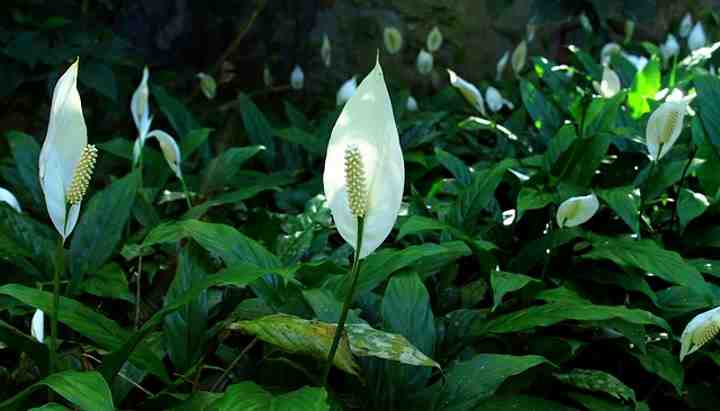
One of the few low-light bathroom plants is the peace lily, which blooms. These low-maintenance tropical plants thrive in the humidity from showers, which keeps the air moist enough. Any contemporary bathroom décor is enhanced by the glossy leaves and brilliant white blooms.
The air-purifying plants for indoors include also peace lilies. They can grow quite large as a result of the size of the pot. As a result, they make ideal floor planners. Keep them in smaller pots to restrict growth if you want to put them on a shelf near your bathroom sink.
Peace lilies may not bloom unless they receive enough artificial light or indirect sunlight. In the springtime, you might relocate them to a more sunny spot. You might instead just admire the gleaming green leaves in your bathroom. So, there’s another reason to have a peace lily at home: they’re considered to be plants that bring good luck.
Philodendron

Philodendron hederaceum (heartleaf philodendron) is one of several varieties available, and it’s a great addition to have in your bathroom as a shower plant. Philodendrons prefer humidity and receive most of their light from artificial sources. Vining plants are common in nature, and they make great shower curtain decorations.
The Philodendron hederaceum cultivar (Heart-Leaf) is the best philodendron cultivar to choose. In a poorly-lit bathroom, this huge, glossy leaves of this tropical plant create a natural environment. The plant’s bushy look will be improved by frequent pruning. You may need to relocate the plant to a brighter area if the trailing vines become excessively spindly.
Golden Pothos (Epipremnum aureum)
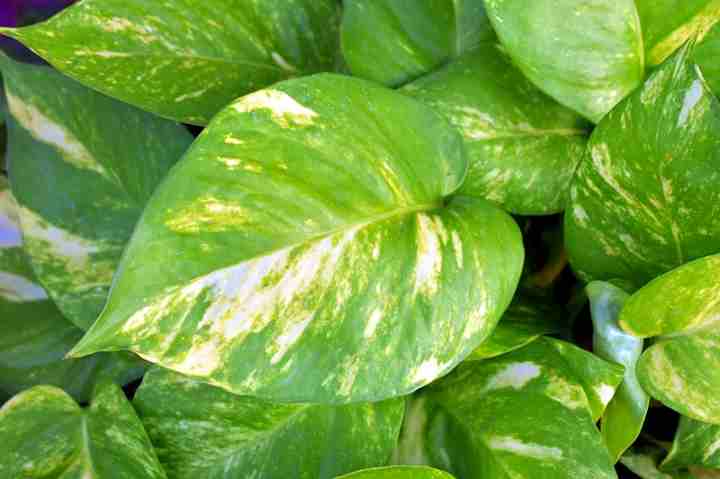
The golden pothos is another plant that thrives in the shower. This is a vine plant that thrives in hanging baskets in your living room, similar to philodendron plants. The bathroom is the best location to put your pothos since it requires a lot of moisture. Regular pruning causes the plant to bush out, which is also known as “devil’s ivy.”
Instead, you can let the vines dangle from a high ledge in your bath area. You don’t have to be concerned about keeping the lights on in your bathroom because these plants prefer shade. In the event that the soil isn’t sufficiently moist after using hot showers, water it occasionally.
English Ivy (Hedera helix)
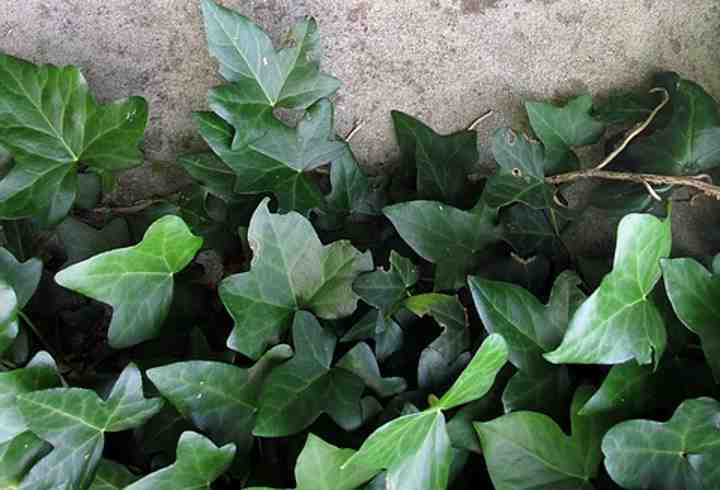
Since it thrives in low-light situations and needs wet air, English ivy is another excellent bathroom plant. Ivy is a shower plant that is incredibly easy to care for. In your bathroom, the lengthy trailing vines serve as a greensy embellishment. The vines of these tiny plants may be hung in a basket in the shower area or maintained in a pot and allowed to dangle along a bathroom windowsill.
The green and creamy-white leaves in the variegated kind lose some of their vibrancy in bathrooms with no natural light. Remember that English ivy is poisonous if you have it in your bathroom. As a result, it’s critical to keep kids and pets away from it.
Weeping Fig (Ficus Benjamina)

You may grow a weeping fig if you have enough room in your bathroom for a little water-loving tree. These tiny shrub-like trees thrive in humid environments and flourish in containers. Yet, if you want a weeping fig to brighten up your décor, you’ll need a bright, spacious bathroom.
In a shaded corner, as long as the bathroom is generally bright, these common houseplants can add a vertical accent. A dragon tree or cornstalk plant (Dracaena fragrans) is the best choice if your bathroom has low light and you want a small indoor tree.
Arrowhead Plant (Syngonium podophyllum)

Arrowhead plants flourish in bathroom settings and need protection from strong sunlight. Freshly laundered steam is ideal for these leafy houseplants because it provides humidity. Low to medium-level light is the finest option. Cultivars with deeper leaves flourish in shaded areas or in minimal light.
Arrowhead plants may hang in the shower because of their lengthy trailing vines. Alternatively, to let the hanging vines embellish a bathroom, a potted plant could be put on a shelf. The climbing vines will need some support if you want to use this plant as a floor planter. This bathroom plant will stay looking full and bushy by trimming it on a regular basis.
